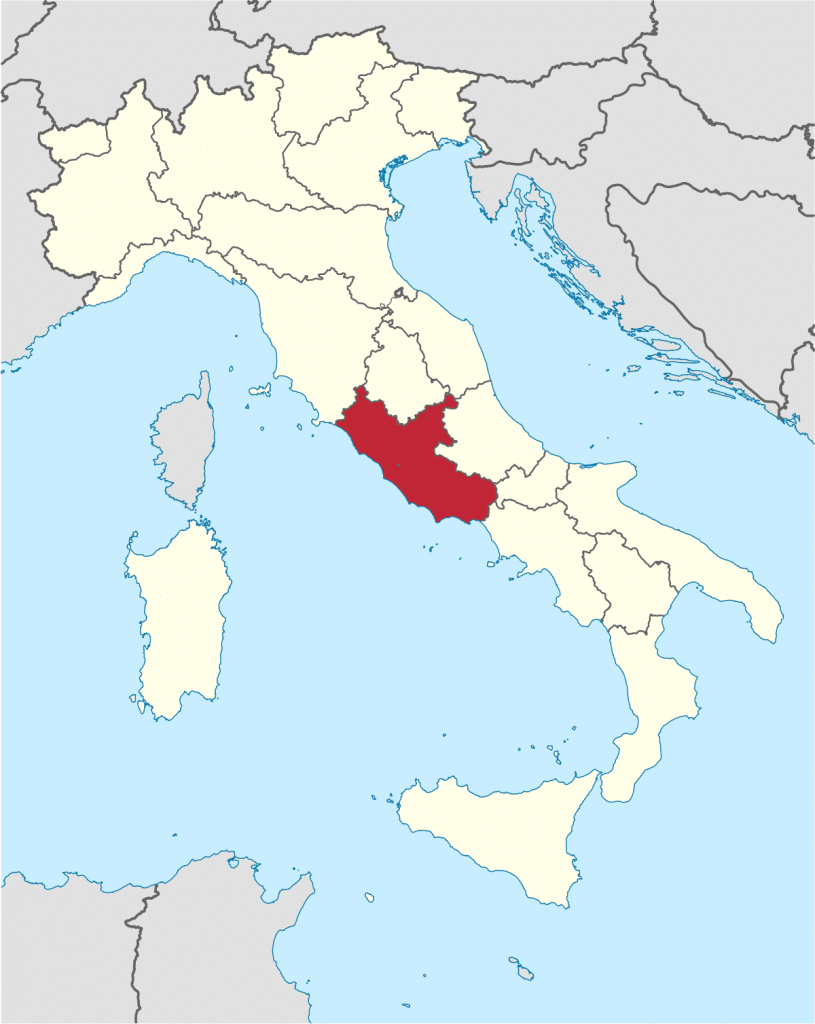
Lazio Cusine story
The Lazio cuisine is a home-style cuisine, where traditional dishes are made up of poor foods but cooked, they are very tasty.
The most internationally known dishes of this gastronomy are certainly Spaghetti Carbonara and Bucatini Amatriciana, two dishes that have traveled the world and uniquely recall one of the most beautiful cities of the entire peninsula: Rome. These two traditional dishes are among the most popular and requested in the Italian capital, and can be found in almost all restaurants.
Roman cuisine includes a large number of typical dishes, the preparation of which involves the use of typical regional products, such as Pancetta and pecorino which, as we have seen, are the basis of the recipe for bucatini all’amatriciana. Among the best recipes we find many typical ingredients of the peasant cuisine of the region and central Italy.
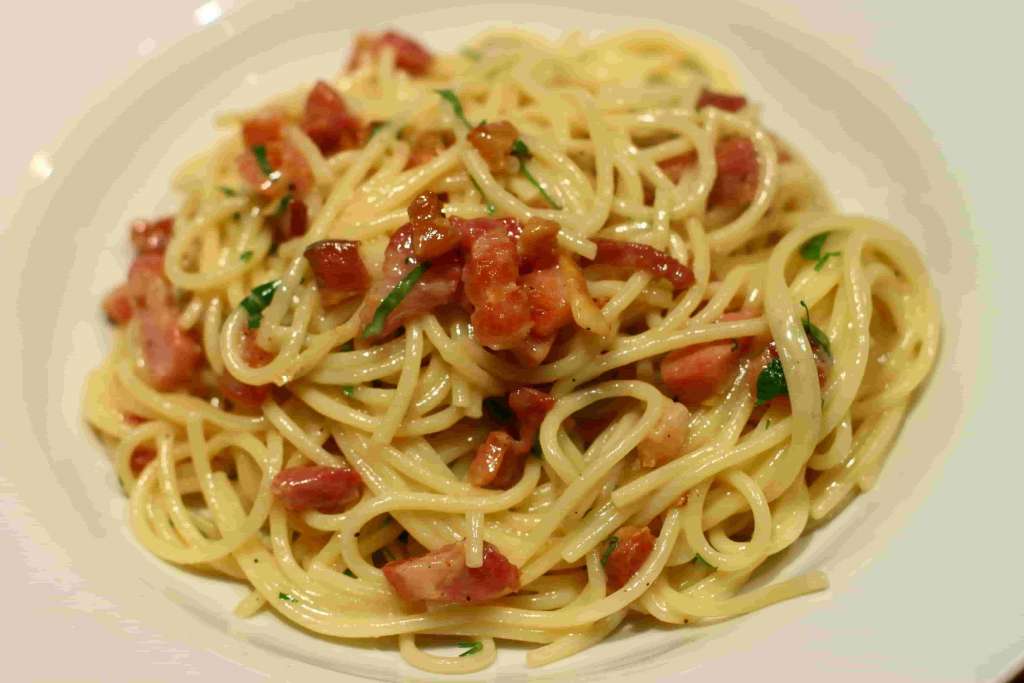
Lazio Cusine
Spaghetti alla Carbonara
Probably the most famous Roman dish in the world, it is prepared with Guanciale (pork cheek) or Bacon, fresh eggs, Pecorino Romano and a lot of pepper, cream is absolutely forbidden.
If it is true that until the thirties there is no trace of the preparation of carbonara in Rome, this recipe begins to appear starting from 1944. A similar coincidence of dates provides a precious clue to understand who to attribute the invention of this tasty dish.
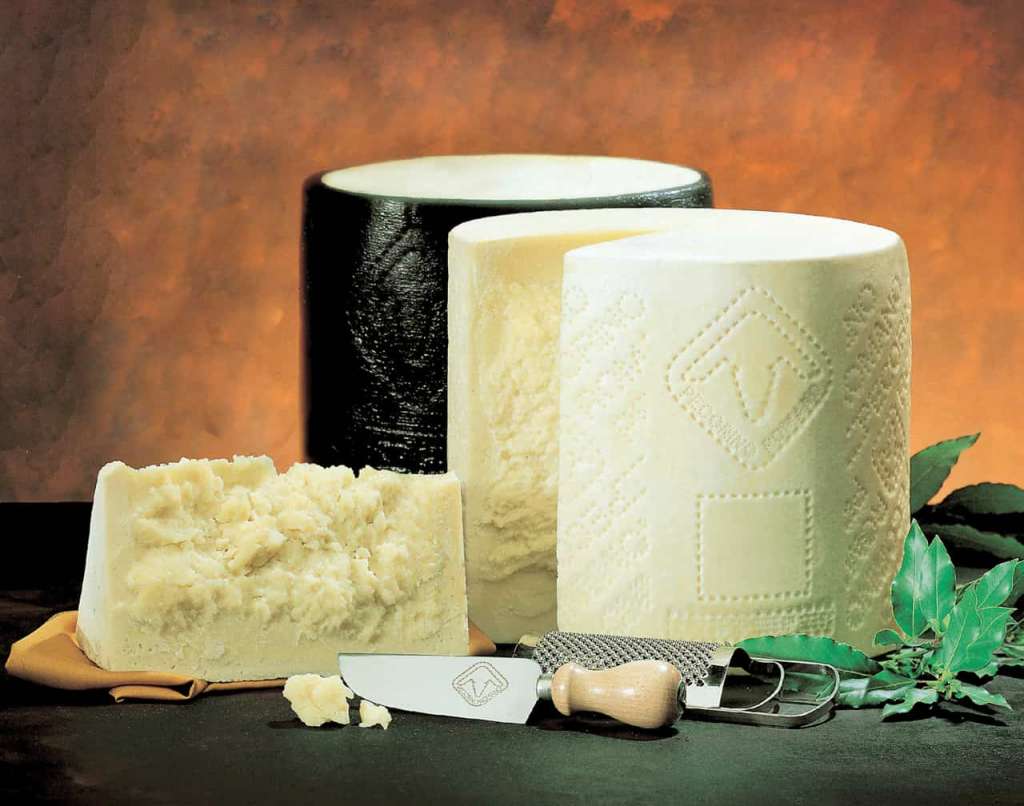
It is said, in fact, that the Allied soldiers engaged during the Second World War on the Reinhard line, between Lazio, Molise and Campania, had the opportunity to taste and become fond of the typical “Cacio e ova” pasta from Abruzzo. It was natural, at least according to what is said between historical reality and legend, to add the bacon, typical of the area, and possibly the smoked bacon imported from the United States.
These were the flavors that reminded soldiers of “home”, but this did not prevent the Romans, once they discovered the recipe, from making carbonara their own, which was literally adopted to the point that, today, no one would dare to question its geographical authorship.
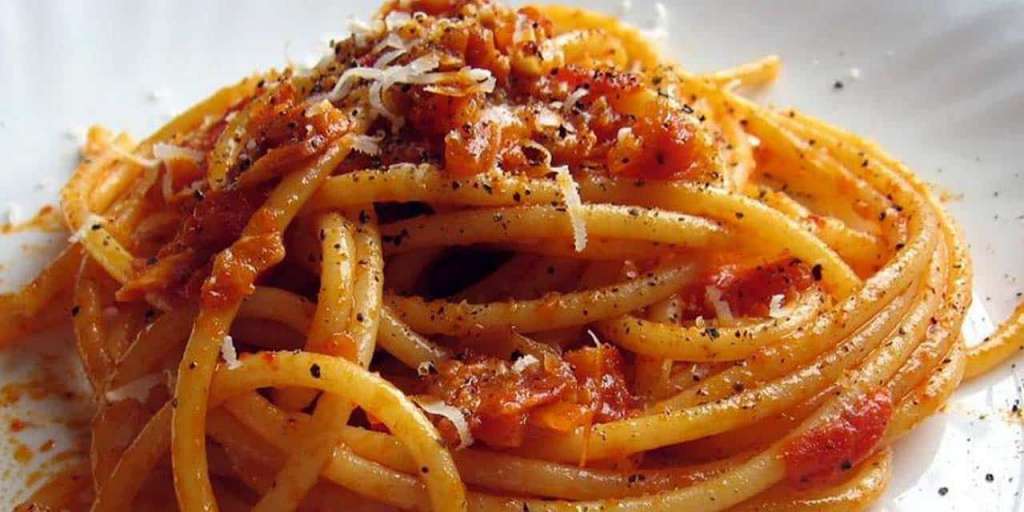
Another first course of the Roman tradition is:
Bucatini Amatriciana, which is prepared with pancetta, tomato sauce and cheese. This dish originates from the ancient Tagliatelle alla Gricia, where however the tomato sauce is missing. With cacio, on the other hand, we cannot forget the delicious Cacio e Pepe pasta, a quick dish with a unique taste, thanks to the important presence of pecorino romano.
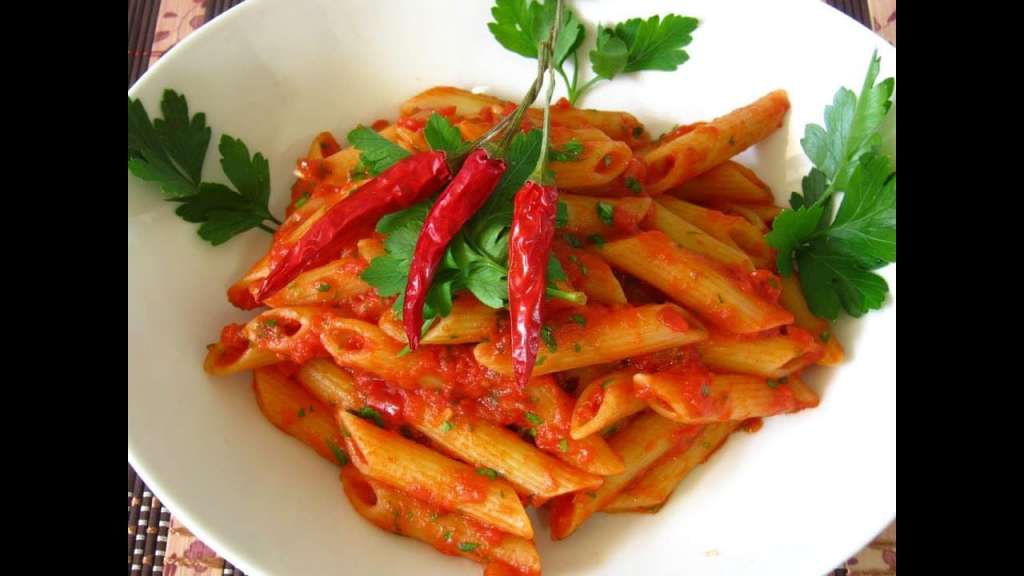
Lazio Cusine
Pasta all’Arrabbiata is similar to Amatriciana, so called because the amount of chili in the recipe is really a lot! It differs from the first for the presence of fresh chilli instead of pepper and also for the lack of pancetta, which however can be added as desired.
Another typical Lazio recipe is “Pasta Aio and Oio, Pasta Aglio ed Olio“, prepared in a pan with garlic, extra virgin olive oil and chilli. This is excellent because it can be done in a jiffy with ingredients that you always have in the pantry.
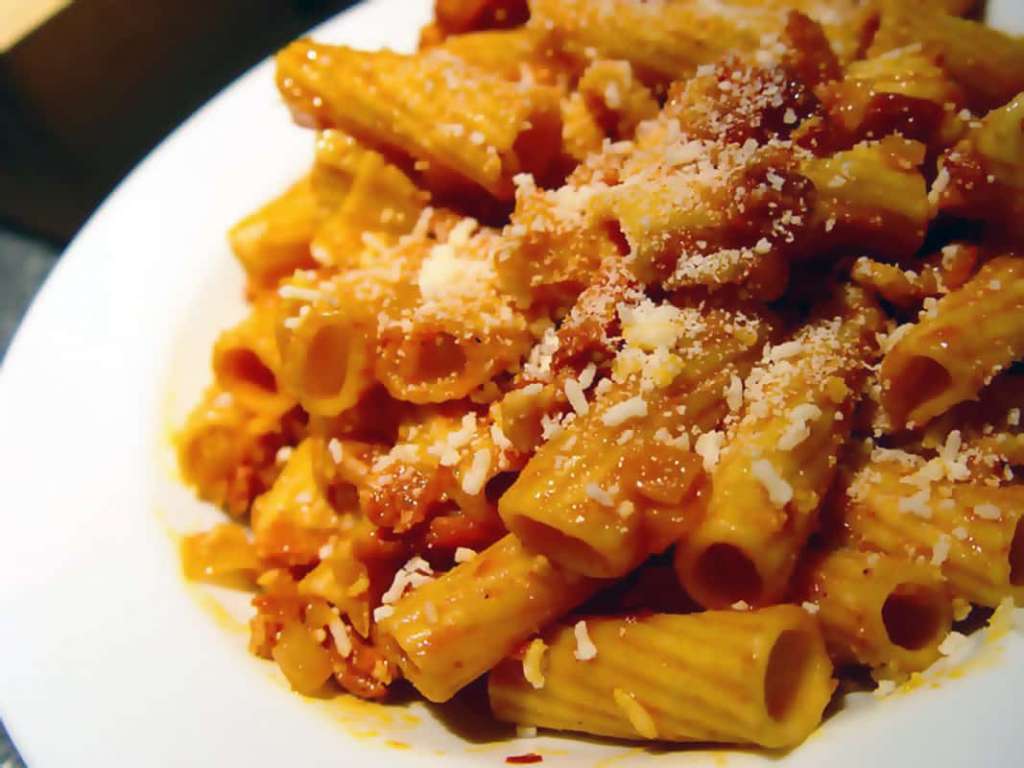
Lazio Cusine
Typical Ciociara pasta are Rigatoni with Pajata. This dish was usually cooked on Sundays or for holidays, as a main course of a family lunch, because the sauce needs to cook slowly and for many hours, so that the pajata, that is the veal intestine, becomes tender and flavored. the sauce. Even in Lazio it is customary to make Scarpetta (lick the sauce in the dish with bread-dipping), especially with the typical bread of the area.

The Roman Ciriola is a sandwich in the shape of a rugby ball, which if not eaten during the day is used in slices as croutons. Another very popular type of bread is the Genzano cereal bread, which remains soft even in the following days.
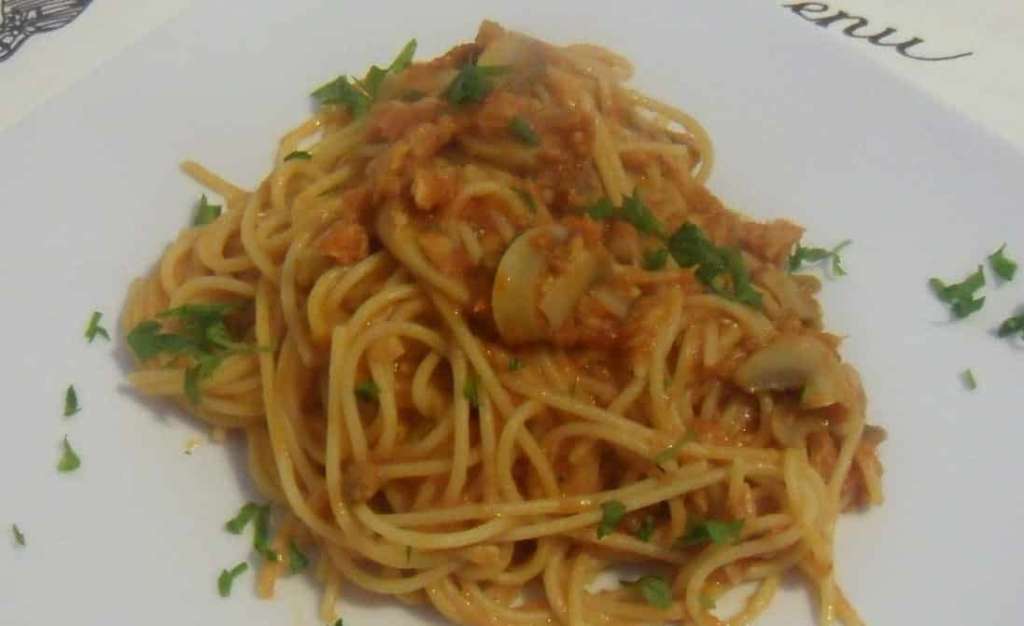
All these first courses have in common the fact that they were originally prepared with easily available foods, as well as the pasta alla Carrettiera, originally prepared by the carters, that is, by those who carried carts around Rome, and could not take with them , easily perishable foods.
Lazio Cusine
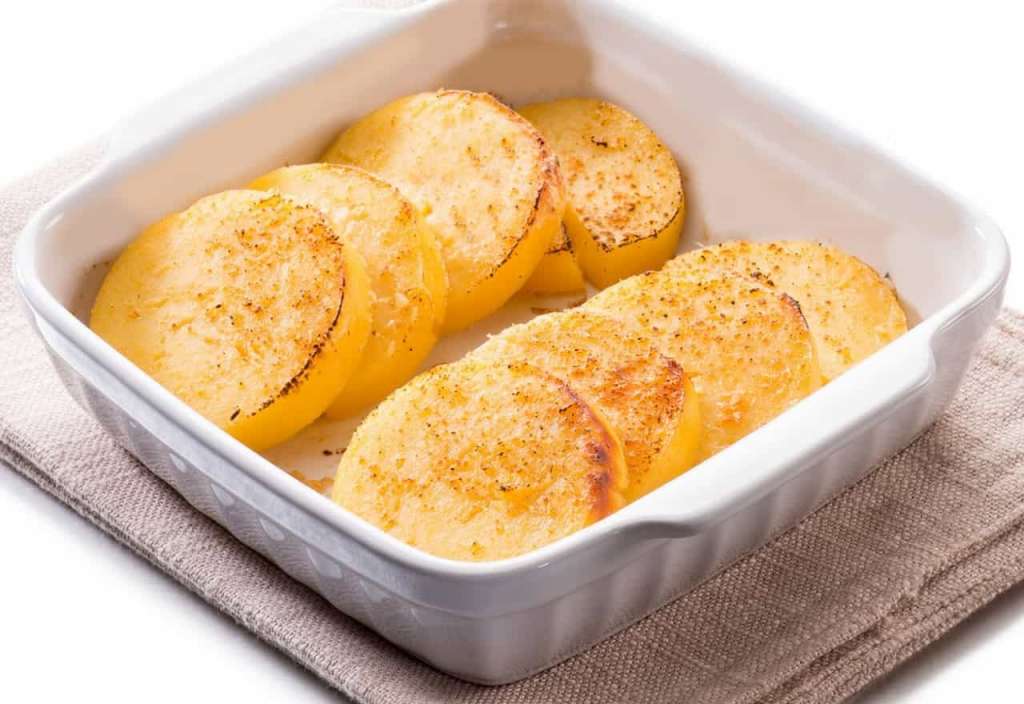
Another traditional dish are the Gnocchi alla Romana, prepared with semolina and cooked in the oven with various cheeses. Even this recipe is of dubious origin, since the large amount of butter traces it back to distant Piedmont, while their unusual shape suggests a spelling error of the name, which from “Romanian” has probably become “Roman” with the passing of years.
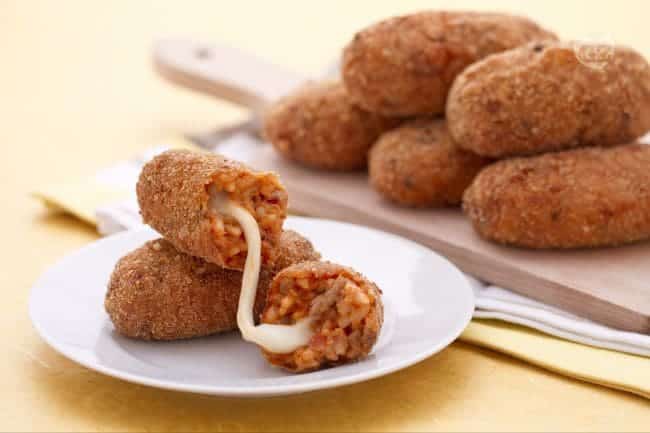
On the subject of first courses, even if it is actually part of the appetizers, the “Supplì on the phone” is one of the most popular dishes for tourists in the capital because it is a quick and tasty dish that can also be eaten while walking through the streets of the city . Supplì are similar to Sicilian arancini, consisting of rice and stuffed with meat sauce and stringy cheese, which recalls the idea of the old telephone wire.

Lazio Cusine
Main dishes
As for the second courses, in Lazio those of meat are definitely preferred to fish dishes. In fact, one of the few typical Lazio dishes that recall the sea are the Cuttlefish with peas, prepared stewed with a red sauce.
In addition to lamb, chicken and pork, in the Lazio gastronomic tradition, cuts of meat are often used such as oxtail and offal, that is the entrails of lamb.
With the chicken you prepare the recipe of Chicken with peppers blended with white wine, a very simple regional recipe and often used in the rest of the peninsula.
The lamb, on the other hand, is often replaced by the suckling lamb, called in the Roman dialect Abbacchio. This typical dish is cooked in the oven with potatoes, or alla Cacciatora with various spices.

Lamb is the main ingredient of one of the typical specialties of Lazio: the Abbacchio a scottadito. To prepare this typical dish, the animal’s cutlets are used which, after being sprinkled with a light layer of lard, salt and pepper, are roasted on the incandescent grill and served very hot. They are excellent to taste like this, or they can be accompanied by spicy sauces.
When you buy Abbacchio, you usually also buy its offal, with which you prepare a traditional dish much appreciated by the Romans: Coratella with artichokes. The lamb entrails have a very intense flavor, but washed and cooked properly, they are pleasant even to the most skeptical. In addition to Coratella, lamb sweetbreads are also very popular, because they are very tender and recall the taste of milk. They are usually fried and served with just lemon juice and salt.
Still on the subject of entrails, among the typical Roman foods, we cannot fail to mention the Roman tripe which is a riot of flavors thanks to the presence of mint, red wine and sautéed carrots and onions.

With another unusual cut of meat, one of the most famous gastronomic specialties is prepared: Coda alla Vaccinara. To prepare it, you need to buy the oxtail or veal, already cut into not too big pieces, and cook it in a sautéed oil and lard, to which the vegetables are then added: celery, carrots and onions. Only then are the peeled tomatoes added and left to cook for several hours, usually three or four, until a good reduced sauce is obtained with which you can then dress a nice plate of rigatoni.
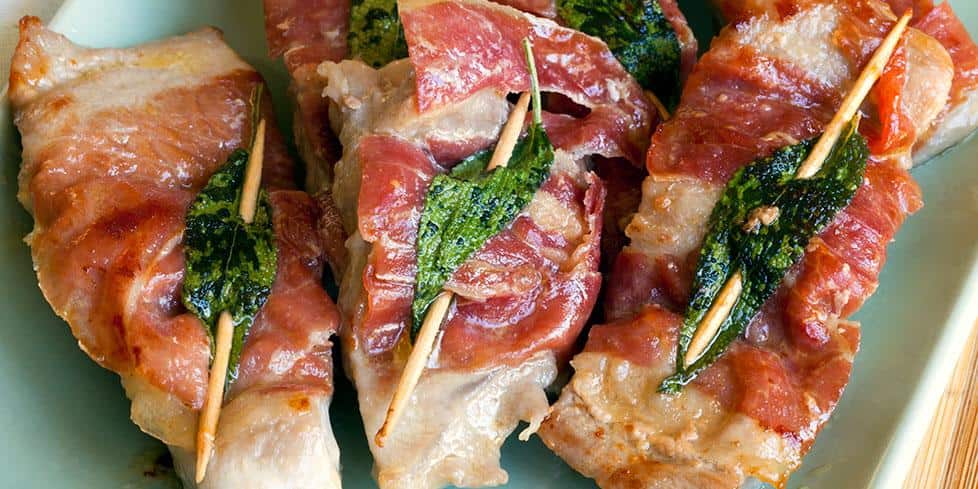
Returning instead to the classic cuts of meat, there is a Roman dish that is now prepared throughout Italy, thanks to its goodness and simplicity of realization: the Saltimbocca alla Romana. To prepare them, you need slices of veal, raw ham and sage leaves. This dish is ideal for those who have little time to cook but want to eat a dish full of flavor.
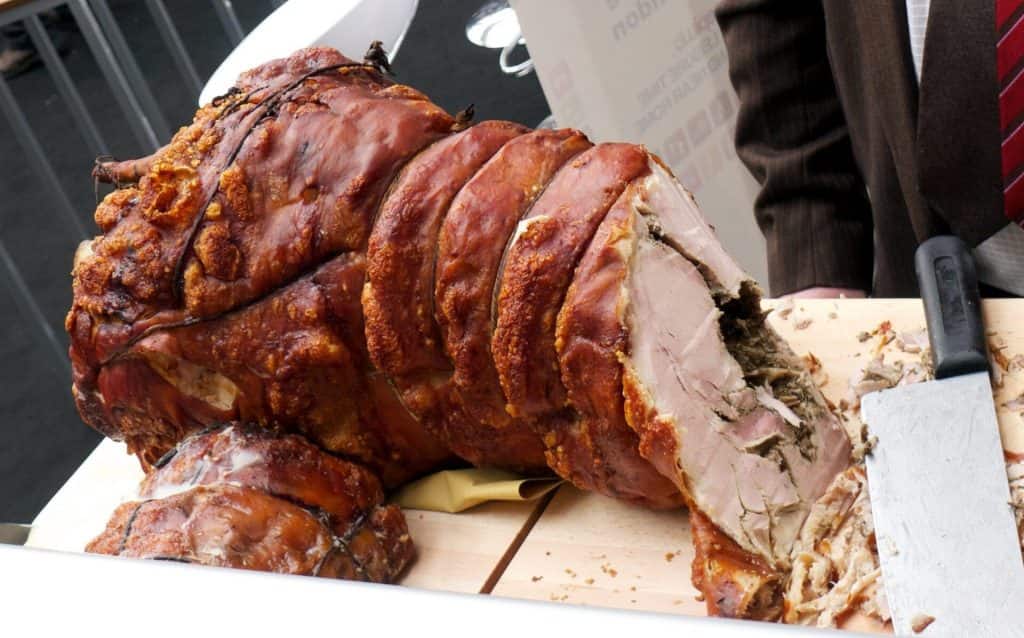
In the Lazio gastronomic tradition, we cannot forget one of the best known and appreciated dishes such as Porchetta. At the base of several typical dishes of Lazio cuisine, it originates from Ariccia, a town in the Castelli Romani near Rome: it is nothing more than the boneless and gutted pork, cooked on a spit or in the oven and flavored with rosemary or wild fennel.
Porchetta is usually used in stuffed sandwiches, but it can also be enjoyed alone, especially if still warm, because it is very tender and retains all the flavor of the spices inside.
Lazio Cusine
Side Dishes
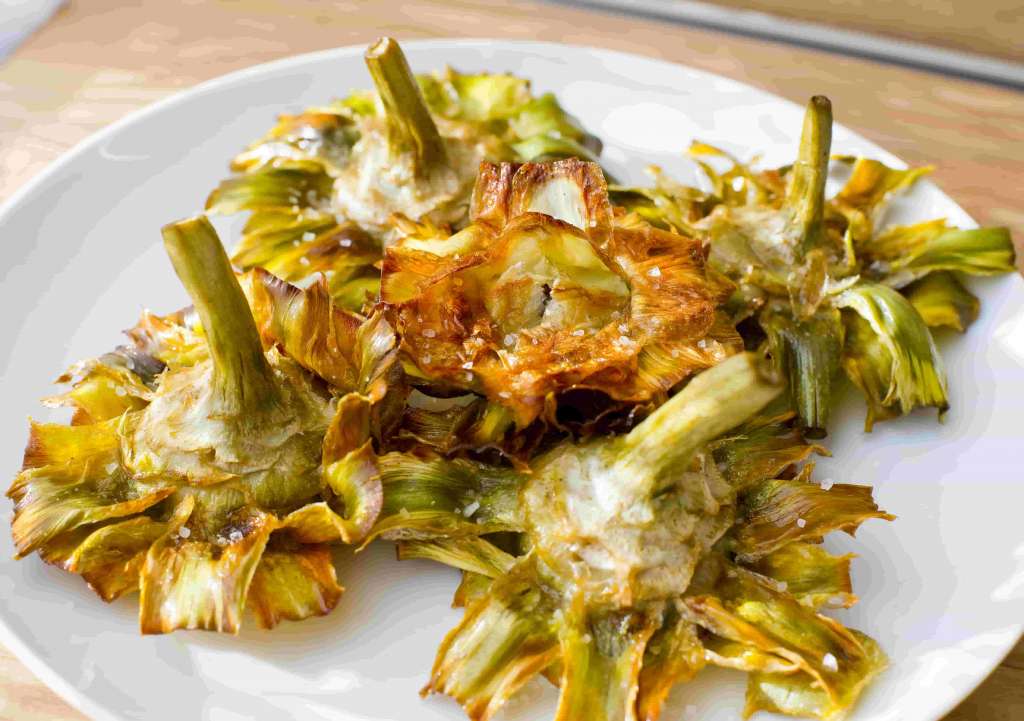
To accompany these meat dishes, the vegetable side dishes that complete all the typical dishes of Lazio cannot be missing.
The most famous vegetable side dish is certainly the Giudia Artichoke dish, very simple to prepare but really delicious. It is prepared with Roman artichokes, those without thorns, which must be cleaned and then fried in boiling oil. If you want, you can vary the original recipe by preparing a Savory Artichoke Cake alla giudia with the same ingredients, which is certainly a more substantial single dish.
Savory pies are cooked very often around Rome and include the use of traditional traditional vegetables, easy to find throughout the region, such as chicory, chicory and artichokes, often accompanied by Gaeta olives, very famous for their goodness.
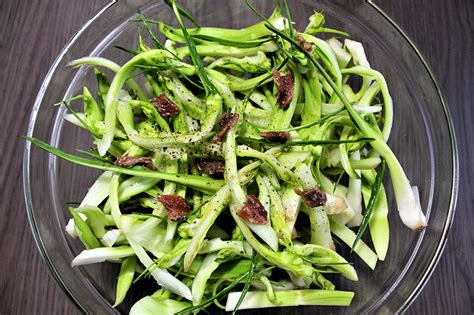
If, on the other hand, you prefer a simpler side dish that does not require cooking, you can focus on a good chicory salad, a typically Roman vegetable with a bitter taste, attenuated by the presence of anchovies that dampen the flavor. Always with Puntarelle, it is a must to eat the Roman pizza which is higher than the Neapolitan one and often prepared with buffalo mozzarella instead of fiordilatte.
Another salad typical of the Roman tradition is that of beans, to which anchovies, onion and thyme are added. For a quick and more substantial salad, you can use the diced caciotta, raw courgettes, tomatoes and mint instead.
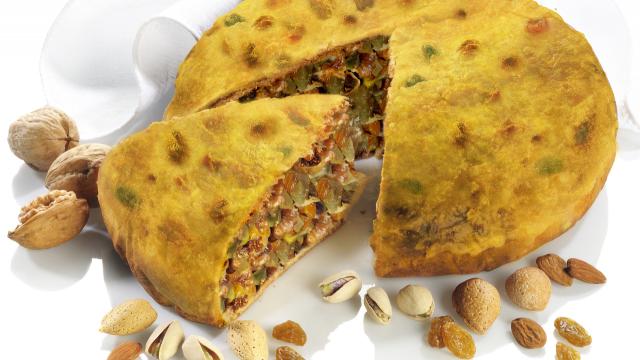
Lazio Cuisine
Desserts
Desserts also represent an important part of Lazio gastronomy.
The best known dessert is undoubtedly the Pangiallo, a sort of round sandwich prepared with flour, dried fruit, candied fruit and chocolate, made tasty even to the eyes by the yellow color provided by the saffron.
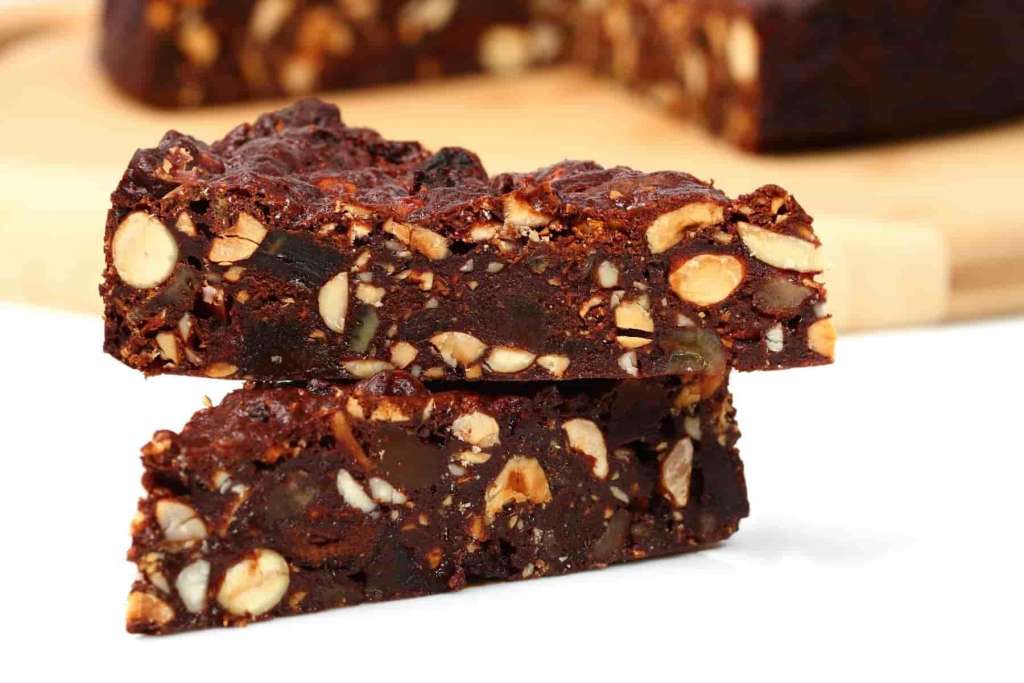
In the Frascati area, the Pupazze are famous, woman-shaped biscuits prepared with a large amount of honey and orange flavor, to be dipped in milk for breakfast or in wines after dinner.
In the summer in Rome it is customary to stop at a kiosk and quench your thirst with a “Grattachecca“. This drink is prepared with a base of crushed ice and then flavored with strawberry syrups, mint and all other fruit flavors.
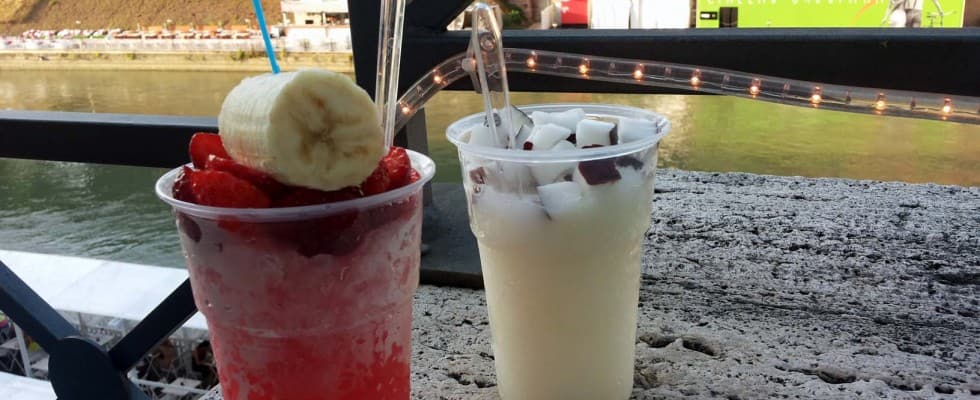
Also in the summer season, the Maritozzo alla Panna is very fashionable, a simple dessert consisting of a leavened dough cut in the center and filled with a soft cream of whipped cream.
Lazio Cuisine
Wines from Lazio
Wines with Controlled and Guaranteed Designation of Origin
Cesanese del Piglio DOCG various wines that fall within the DOCG, produced in the province of Frosinone
Cannellino di Frascati or Cannellino (white) produced in the province of Rome
Frascati Superiore (white) produced in the province of Rome
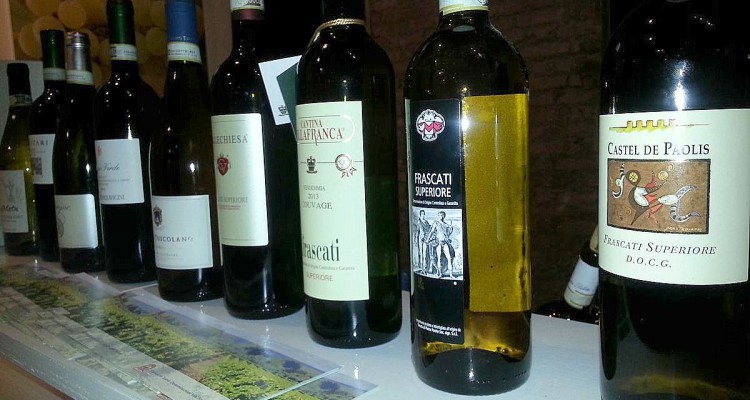
Wines with Controlled Designation of Origin
Aleatico di Gradoli produced in the province of Viterbo
Aprilia produced in the province of Latina
Atina produced in the province of Frosinone
Bianco Capena produced in the province of Rome
Castelli Romani produced in the province of Rome
Cerveteri produced in the provinces of Rome and Viterbo
Cesanese di Affile DOC, produced in the province of Rome
Cesanese di Olevano Romano DOC, produced in the province of Rome
Circeo produced in the province of Latina
Albani Colli produced in the province of Rome
Colli della Sabina produced in the provinces of Rieti and Rome
Etruschi Viterbesi Colli produced in the province of Viterbo
Colli Lanuvini produced in the province of Rome
Cori produced in the province of Latina
East! East!! East!!! di Montefiascone produced in the province of Viterbo
Frascati produced in the province of Rome
Genazzano produced in the provinces of Frosinone and Rome
Marino produced in the province of Rome
Montecompatri Colonna Superiore or Montecompatri Colonna produced in the municipality of Monte Compatri in the province of Rome
Neptune produced in the province of Rome
Interregional Orvieto DOC produced in the provinces of Viterbo (Lazio) and Terni (Umbria)
Rome, whether or not accompanied by the sub-area: Classico (with the exception of the Romanella spumante type)
Sangiovese from Aprilia
Tarquinia produced in the provinces of Rome and Viterbo
Terracina or Moscato di Terracina
Trebbiano di Aprilia
Velletri produced in the provinces of Latina and Rome
Vignanello produced in the province of Viterbo
Zagarolo produced in the province of Rome
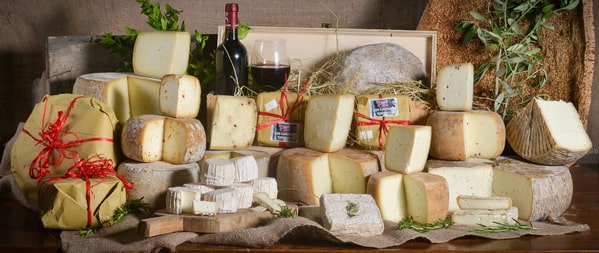
if you want to learn how to make fresh handmade tagliatelle, with the traditional Bolognese Meat Sauce subscribe to one of my classes.
Short class
one-day class
Contact [email protected]
See you soon with a new article.
Chef Luigi
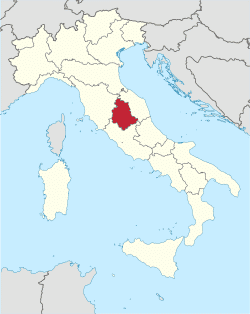
Umbrian cuisine, whose roots lie in the Umbrian and Roman civilization, is founded on a long tradition, with dishes that are not always poor or popular, but with frequent use of legumes and cereals. Little influenced by the neighboring regions, it is essentially based on meat and products of the earth, which are used both on special occasions and in the daily meal. It is a simple kitchen, with generally not too elaborate processes, which clearly enhance the flavors of the raw materials.
Umbrian cuisine
The typology can be divided into three macro areas which, broadly speaking, correspond to the socio-cultural subdivision in which the region is divided. Typical of the whole territory is the processing of pork and the production of cured meats: particularly renowned are those of the Norcia area, hence the Italian term “norcino”, which par excellence designates the producer and seller of cured meats. Other “noble” ingredients that recur in Umbrian flavors are the truffle, an authentic emblem of this gastronomy (especially on the mountain side east of the region and in the middle and upper Valnerina walley), as well as extra virgin olive oil, indispensable in almost all of local recipes. The areas of Orvieto, Montefalco, Torgiano and the area of Lake Trasimeno are also famous for their vines, from which numerous DOP wines are made.
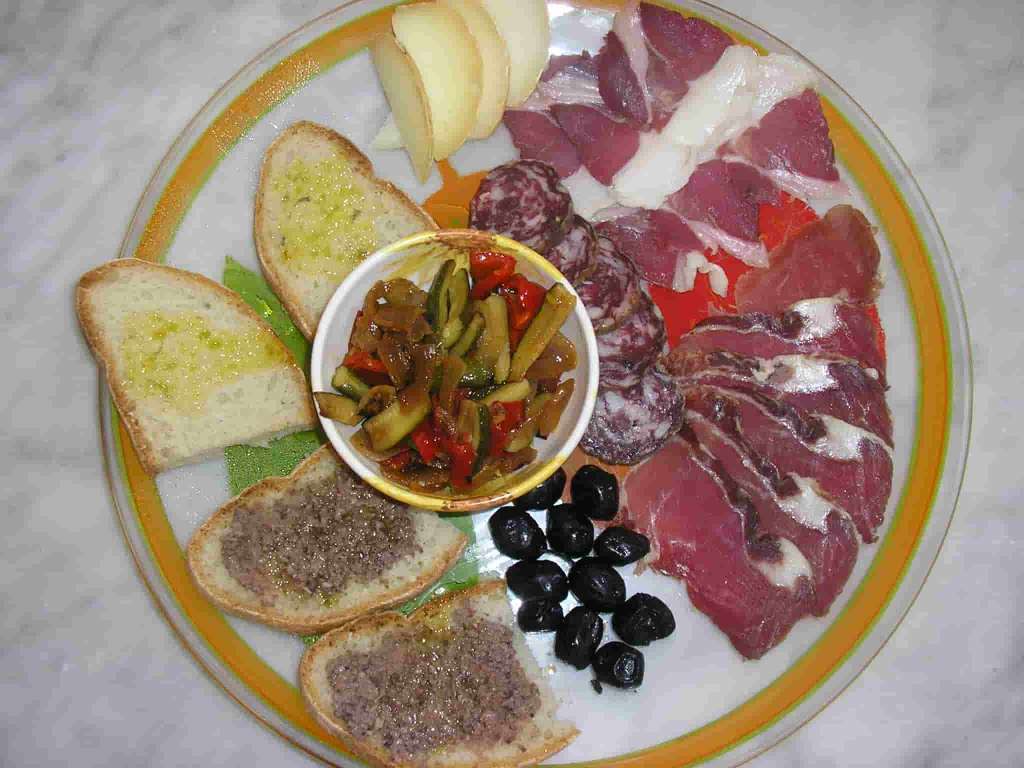
Umbrian Cuisine
Umbrian Appetizers
Umbrian appetizer – this term means a plate of cold cuts and cheeses served at the opening of the meal. It generally consists of one or more slices of ham, salami, capocollo, loin or sausage, associated with pecorino or goat cheese and arugula leaves.
Bruschetta – these are essentially whole slices of bread, lightly toasted on the coals, rubbed with a clove of garlic and then covered with olive oil and a pinch of salt.
Chicken liver crostini – halved slices of homemade bread, toasted or not, covered with a ground chicken liver dough (other recipes include a sauce based on truffles, or mayonnaise and mushrooms, mayonnaise and tuna, or even cherry tomatoes chopped).
Panzanella – it is a preparation based on wet stale bread, sliced or chunks, with the addition of tomatoes, onion, basil, olive oil, vinegar and salt. If other more caloric foods are added, such as tuna or mozzarella, it can also be used as a single dish.
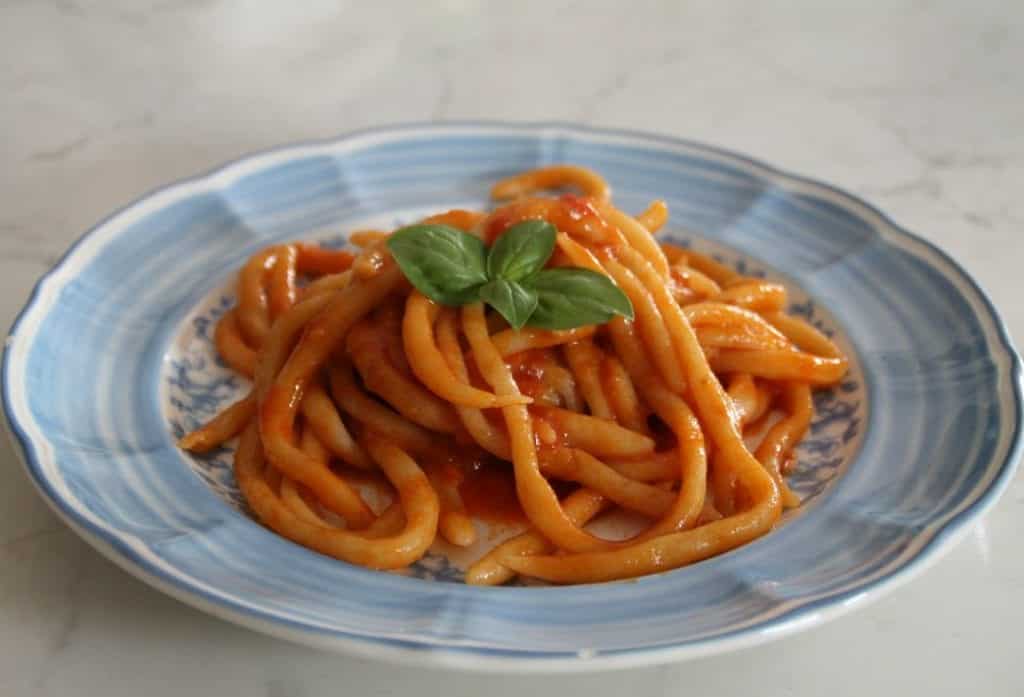
Umbrian Cuisine
Umbrian pasta dishes
Agnolotti al sugo – fresh pasta, typical of Città di Castello which is prepared especially during Christmas and Easter.
Ciriole alla Ternana – ciriola is a long square-section pasta typical of the city of Terni and its province and is traditionally composed of soft wheat flour and water. It is homemade and is similar in all respects to fettuccine or even Tuscan pici. Its peculiarity is the total absence of eggs in the dough. The basic recipe calls for the accompanying sauce to be a simple garlic, Terni PDO extra virgin olive oil with chilli pepper and the addition of parsley and tomato to be poured according to taste.
Cappelletti in broth – fresh pasta, it is consumed in mixed meat broth especially during the Christmas period.
Gnocchi with goose sauce (Perugia) – potato gnocchi served with goose ragù (preferably young).
Gnocchi al castrato – served with castrated lamb or sheep ragù.
Pappardelle with hare / wild boar ragout – this pasta, similar to very wide tagliatelle, is typically served with a hare or wild boar meat sauce.
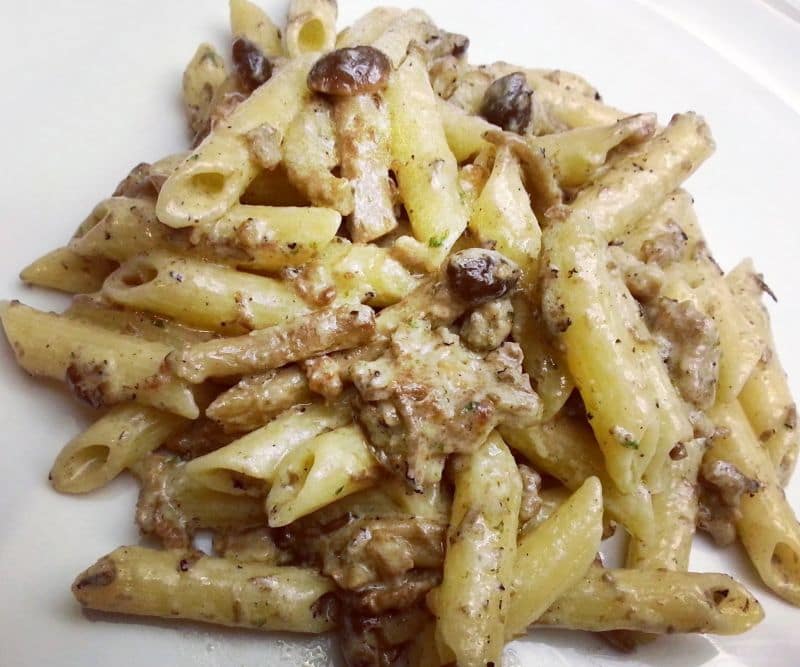
Strangozzi, or Strozzapreti, or Ciriole – it is a pasta similar to tagliatelle, but without eggs, with a rather thick section compared to tagliatelle and a shorter length. In northern Umbria known mainly as strozzapreti, in Foligno-Spoleto strangozzi.
Strangozzi with truffle – generally Norcia black truffle, but also summer scorzone or white truffle, typical of the Upper Tiber Valley.
Tagliatelle al ragù – seasoned with a particular minced veal ragù and pieces of chicken giblets.
Vincisgrassi – sort of baked lasagna typical of the Foligno mountains, probably imported from the neighboring Marche. It seems that the name derives from that of the Austrian general Windisch-Graetz, stationed in Ancona during the Napoleonic period.
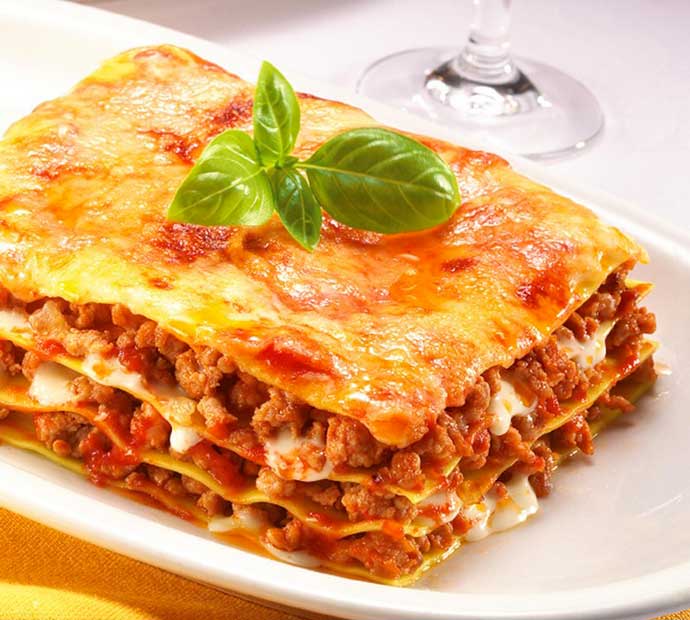
Pasta alla Norcina – Traditional Norcia dish consisting of penne or tagliatelle topped with cream and sausage, fresh truffle and parmesan are sometimes added. In the ancient version, the cream is replaced by sheep’s ricotta diluted with a little cooking water from the pasta.
Gnocchi alla Collescipolana – the famous gnocchi alla Collescipolana, with a more square shape and tougher and al dente consistency than those of classic potatoes from northern Italy, are seasoned with beans and pork sausage sauce are a real delicacy of Terni. This dish takes its name from the hamlet of the Terni castle of Collescipoli.
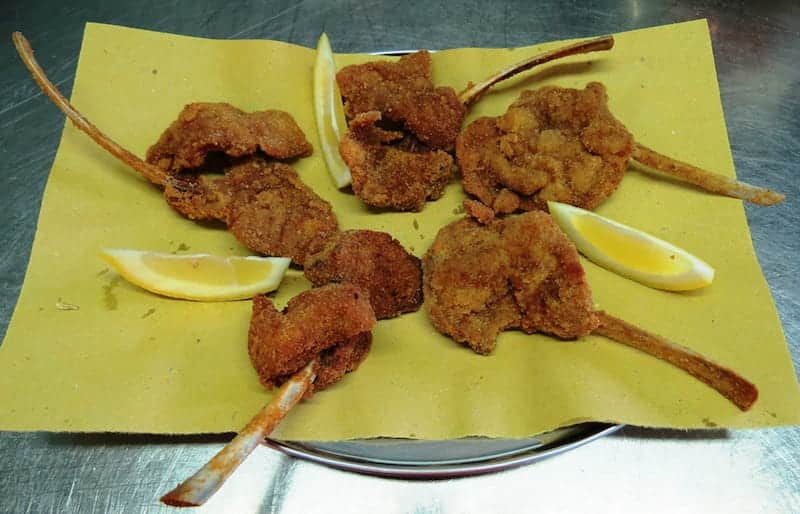
Secondi piatti (main dishes)
Fried lamb – breaded and fried lamb chops.
Coratella d’agnello – stewed in white, with garlic or onion and various flavors.
Friccò all’eugubina – Typical dish of the city of Gubbio, composed of mainly white meats, stewed with tomato and accompanied with Crescia.
Easter omelette (Province of Terni) – Typical Easter lunch omelette, which is seasoned with courgettes, asparagus, wild chicory, sausage and aromatic herbs.
Umbrian Cuisine
Galantine – it is a boneless and eviscerated hen, whose skin is filled with minced chicken and beef, boiled eggs, pepper, cheese, nutmeg and shelled pistachios. The wrapper is then sewn, wrapped with twine for containment and cooked in broth. It is eaten cold, cut into slices.
Snails (Foligno) – the land snails are handpicked and prepared cooked in different ways.
Roasted goose – same method of preparation as roasted chicken, but applied to a goose.
Stuffed roast pigeon (Province of Terni) – traditional preparations involve the use of a whole wild wood pigeon.
Gigeon pigeon (Province of Terni) – the pigeon is roasted on a spit, during cooking the dripping pan is placed under the animal, here the liquid that falls from the pigeon is concentrated and subsequently with this and the entrails of the pigeon itself sauce to be served alongside the roast.
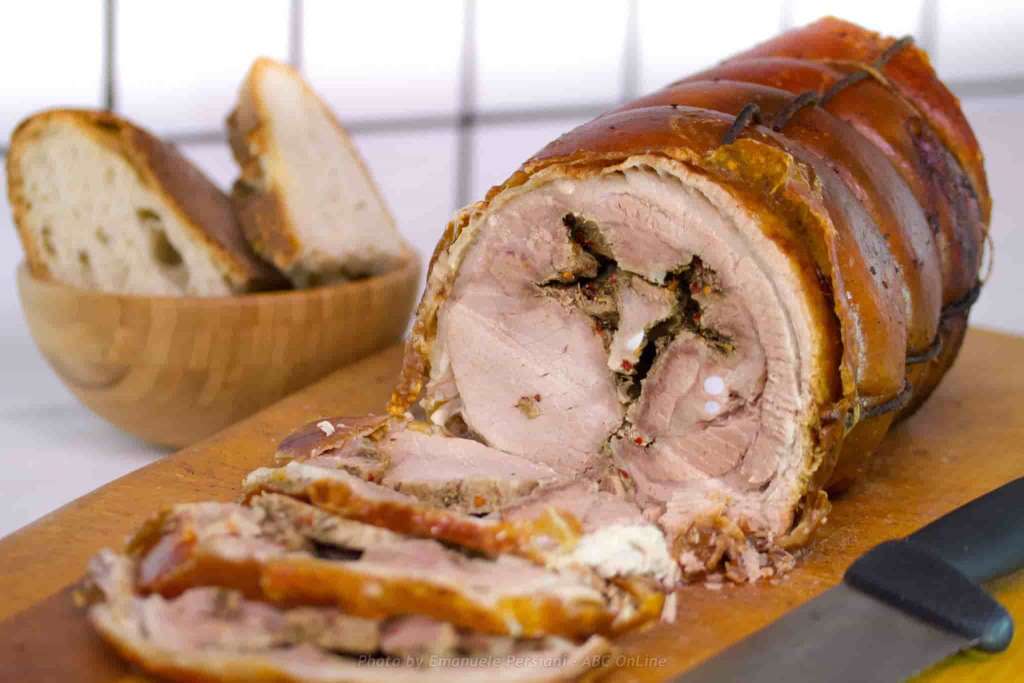
Porchetta – a whole piglet is roasted after being filled with entrails, fennel and aromatic herbs. It is cut into slices and normally eaten, even between meals, in sandwiches (lo paninu co la porchetta): its consumption is favored by the presence of a large number of street vendors who go to the points where the greatest concentration of people is expected (markets, concerts, gatherings, etc.). They generally do not produce porchetta on their own but rather obtain supplies from artisans who prepare it professionally: the best are found near Norcia, the cradle of porchetta, and in the entire province of Terni.
Sausages with lentils – typically Castilian dish, the sausages of Norcia and the lentils of Castelluccio di Norcia are prepared stewed with tomato.
Frog skewers – roasted frogs are typical of the Perugia area of Capanne and are mainly prepared during the annual festival dedicated to them.

Umbrian Cuisine
Umbrian Cold cuts and cheeses
Barbazza – pork cheek.
Smoked guts – pig entrails.
Caciotta – cow’s milk cheese.
Capocollo – cured meat obtained from the pig’s back muscle. After seasoning, it is wrapped in typical oiled paper sheets.

Ciauscolo – spreadable sausage typical of the Marche and Umbria of Valnerina walley and the Folignate mountains bordering the contiguous region.
Cojoni de mulo (Norcia) – sausage with a typical bag shape.
Corallina (Norcia) – sausages prepared with not finely ground meat.
Wild boar sausages (Norcia) – the mixture of these sausages is actually based on pork, but a good percentage of ground boar is added to it.
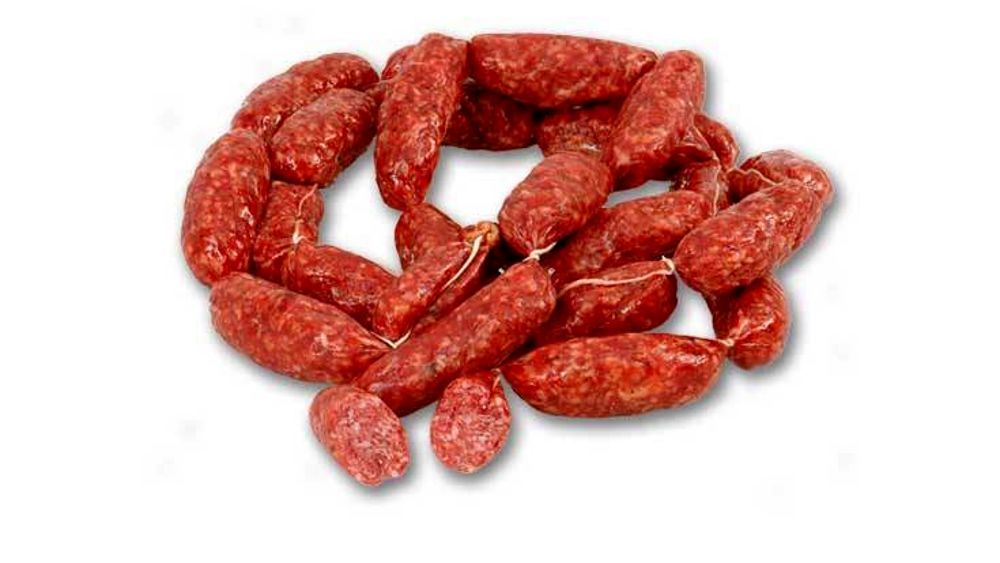
Deer cured meats – staple, morsels, ham and cacciatorini prepared especially in the area of Nocera Umbra.
Loin – similar to the capocollo, but made with pork loin meat. It has a more delicate flavor and an appearance similar to that of bresaola.
Mazzafegati – sausages made from pork meat and liver, stuffed with sultanas and orange peel.
Umbrian pecorino – hard cheese made from sheep’s milk.
Prosciutto di Norcia – is a PGI ham produced in the Norcia area and neighboring municipalities.
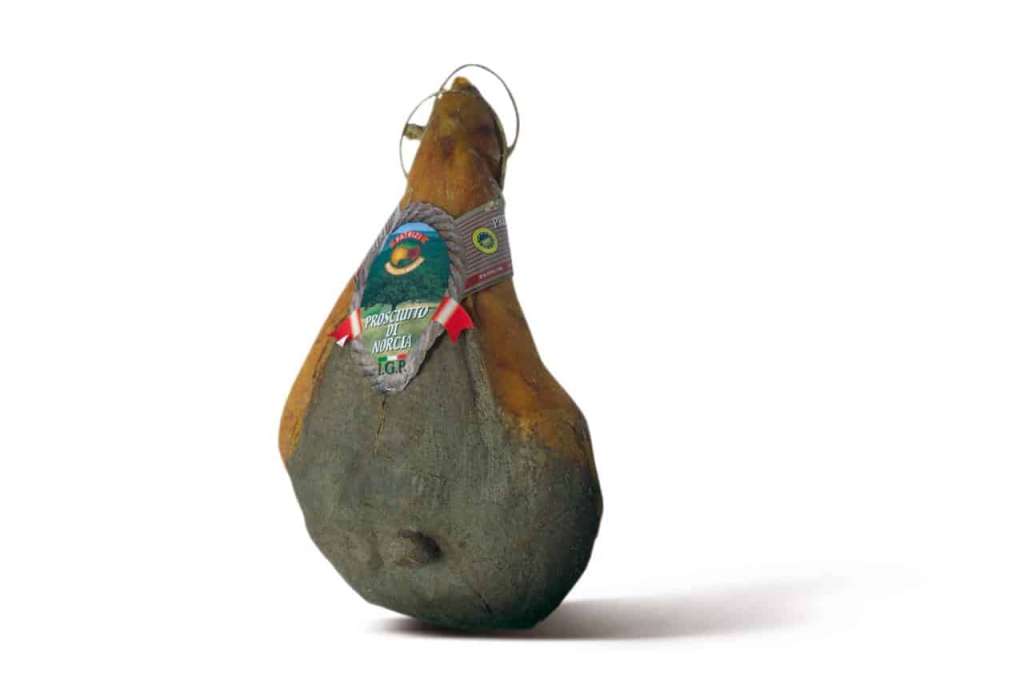
Salted ricotta – the ricotta is aged for a couple of weeks and served grated.
Ventresca – local variant of pancetta.

Umbrian Cuisine
Umbrian Side Dishes
Bandiera – green peppers, white onion and red tomato (reminiscent of the colors of the Italian flag) cut and cooked in a pan with oil and salt.
Grass – various wild field herbs, sorted and boiled, are served to accompany the meat, seasoned with a drizzle of oil and salt.
Lentils – eaten stewed with tomato especially during the Christmas period, they are mainly produced on the Colfiorito plateaus and in the Castelluccio area for which there has been IGP recognition.
Gobbi parmigiana – the leaves of the Artichoke Thistle (Cynara cardunculus L) are used, which is a species of artichoke that is generally harvested in early winter. These are boiled and fried with flour and beaten eggs; cut into strips, they are then arranged in layers in a pan, alternating with bechamel and tomato sauce or ragù. Everything is finally cooked in the oven.

Umbrian Cuisine
Umbrian Desserts
Strufoli – prepared for Carnival, they are cream puffs fried in oil and served sprinkled with plenty of loose honey. More common in northern Umbria, the carnival strufoli are similar to the Castagnole of southern Umbria, they differ from these in their larger size and because they are sprinkled with honey, rather than alchermes and sugar.
Castagnole (Province of Terni) – Sweets prepared for Carnival, similar to the Strufoli of northern Umbria, differ from these in their smaller size and in that they are sprinkled with alchermes and sugar, rather than honey.
Sweet potato donuts – typically prepared in the Colfiorito area with local red boiled and mashed potatoes. It is a recipe with a fairly recent tradition.
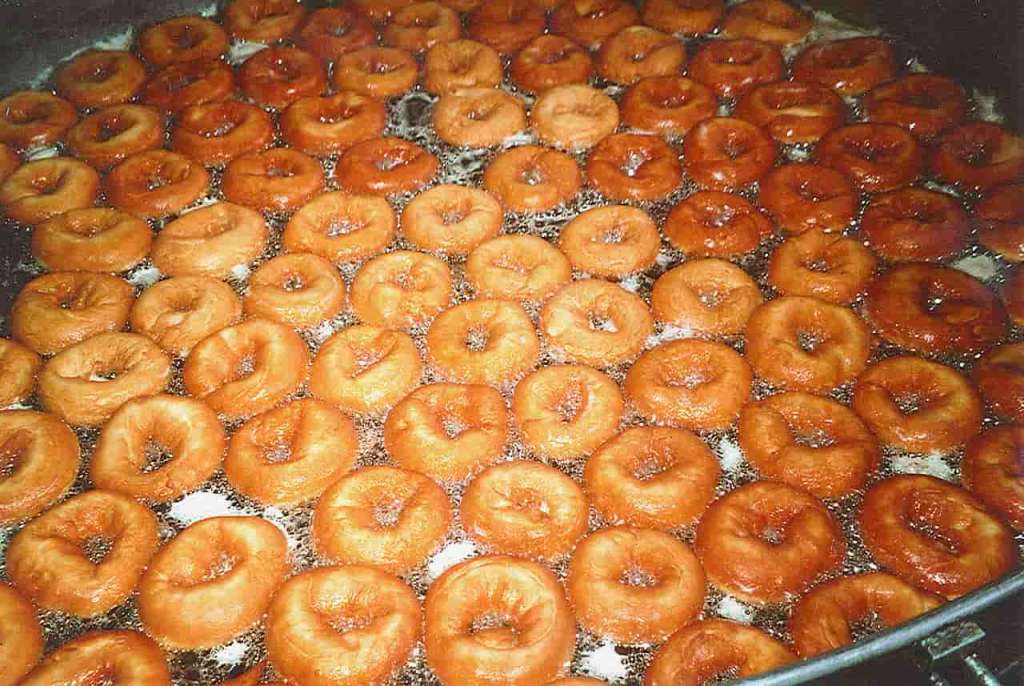
Cicerchiata (mountain around Foligno) – The dessert is based on flour, eggs, butter and sugar. From this, balls of about one centimeter in diameter are obtained which are fried in olive oil or lard. Drained, they are arranged “pile” and covered with honey.
Torciglione (Perugia) – characteristic open donut (i.e. not closed on itself) prepared with a mixture of sweet almonds, pine nuts and sugar. It is traditionally prepared in the form of a snake, wrapped around itself, with a protruding almond to draw the tongue.
Torcolo – round donut made from flour, sugar, milk and yeast.
Torcolo di San Costanzo (Perugia) – it is a donut that is prepared on the occasion of the feast of San Costanzo (29 January), patron of the city of Perugia. The dough is enriched with candied fruit, raisins and anise.
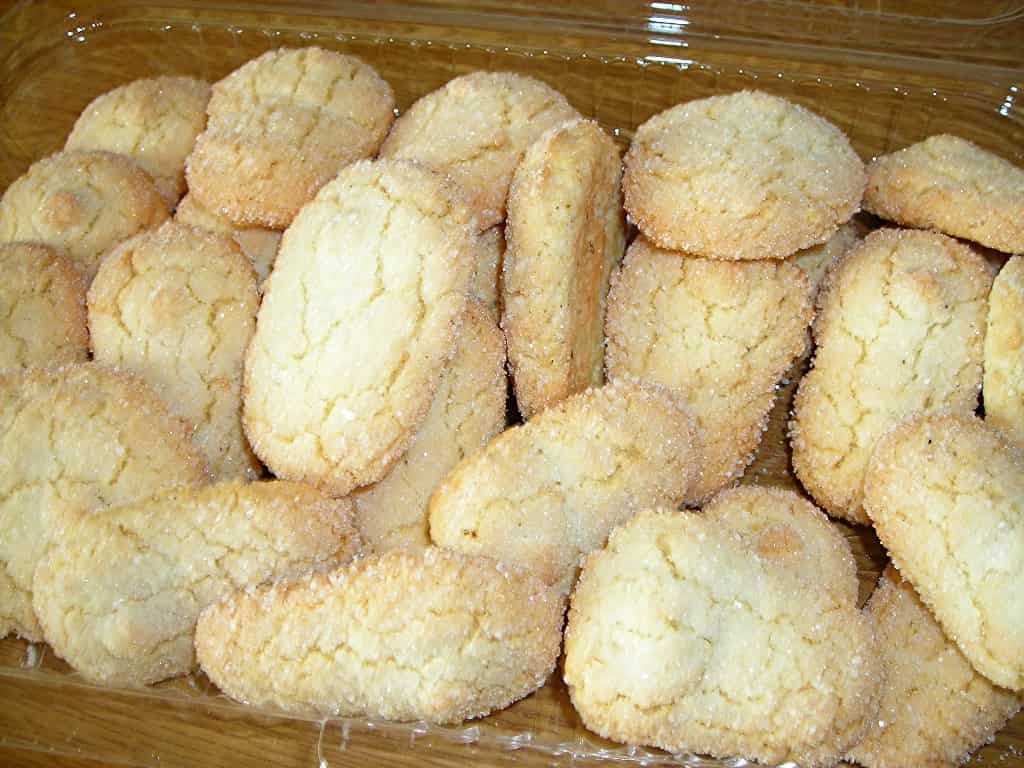
Zuppa Inglese (variations throughout the region) – prepare the Torcolo in very fine slices, wet it in alchermes and arrange it in layers in a ceramic pan. The layers of torcolo are alternated with layers of custard, which also forms the last layer. Everything is decorated with chocolate and sugared silver beads. The dessert should be served cold.
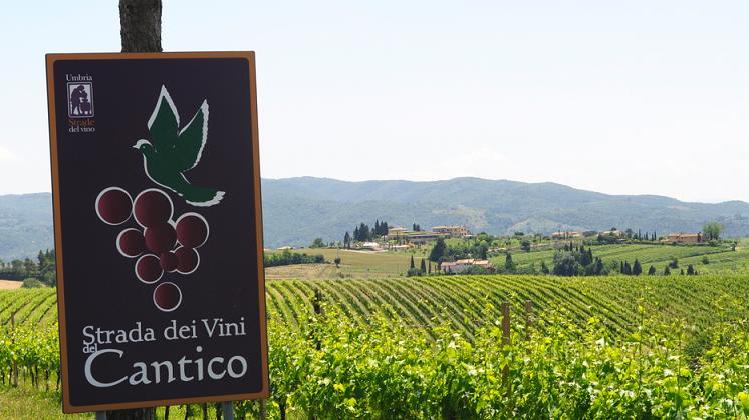
Umbrian Cuisine
Umbrian Wines and spirits
The wines with controlled denomination of origin in Umbria are eleven: Orvieto, Lago di Corbara, Assisi (Grechetto, white, Novello, rosé, red),
Altotiberini Colli(white, rosé, red),
Amerini Colli (white, red, Malvasia) ,
Colli Martani (Grechetto, Grechetto di Todi, Sangiovese, Sangiovese reserve, Trebbiano),
Colli Perugini (white, rosé, red),
Colline del Trasimeno (Cabernet Sauvignon, Cabernet Sauvignon reserve, Gamay, Gamay reserve, Grechetto, Merlot, Merlot reserve , white, Vin Santo white, sparkling white, selected white, rosé, red, sparkling red, Novello red, reserve red, selected red, classic sparkling wine),
Montefalco, Rosso Orvietano, Torgiano (white, red, sparkling wine).
There are two wines with Denomination of Controlled and Guaranteed Origin:
Torgiano Rosso Riserva and Montefalco Sagrantino (Rosso in the Secco and Passito types).
Orvieto constitutes 70% of the DOC wine production of the entire region.
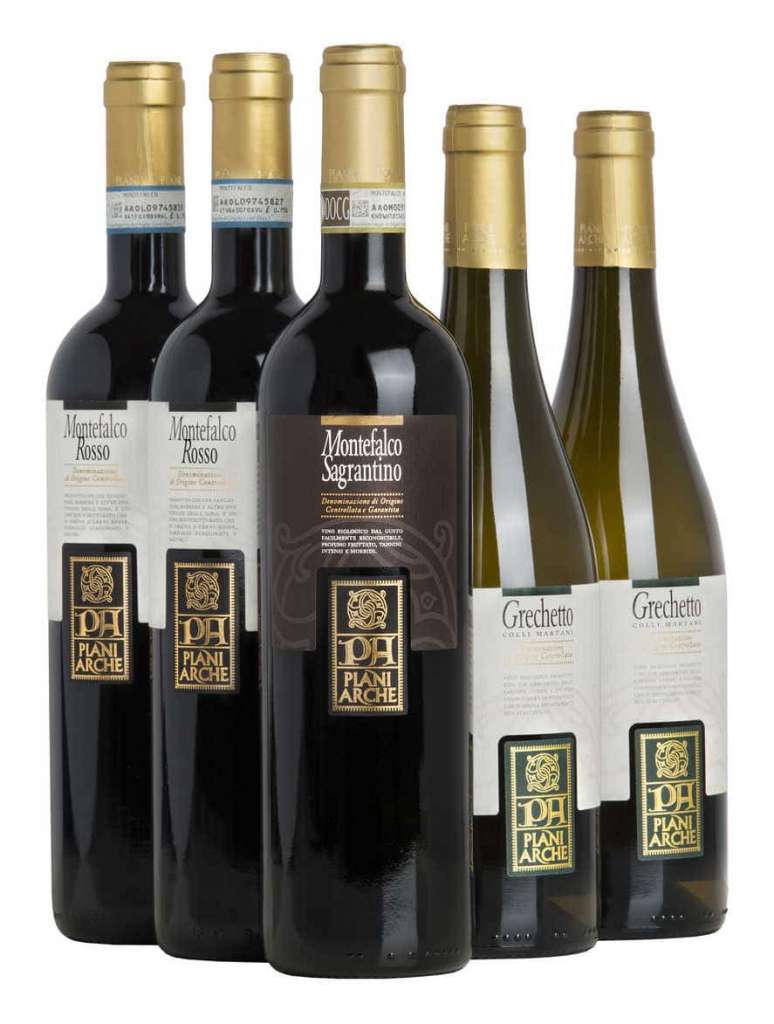
Liqueurs include:
Alchermes – although it is not Umbrian, this red-colored liqueur is used in many sweet preparations.
Amaro al tartufo nero – alcoholic product based on various herbs and an infusion of Norcia black truffle.
Maniere (Perugia) – fermented syrup of the fruit of the strawberry tree.
Vin Santo – wine obtained from the pressing of grapes left to dry for a couple of months, in a dry and well-ventilated place. It is generally prepared in the months of December-January.
Viparo – it is a bitter made in Terni by a single producer, the Morganti family. It is prepared from an infusion of herbs, roots and aromatic woods. The name comes from the Latin Vis Paro, “I generate strength”.

Bread and starchy foods
Arvoltolo (Perugia) – dough made from flour, water, yeast and salt which is reduced to batter and poured into frying over boiling oil, in the form of slightly thick circular cupcakes. After being dried from the oil, the voles can be seasoned with salt or sugar and preferably eaten hot.
Brustengolo or brustengo defferents from Arvoltolo for a more liquid and yeast-free dough. The brustengolo mixture can be seasoned with sausage, or onions or rosemary, etc.
Bocconcello – it is a savory cheese cake, prepared in the past during the harvest and threshing, typical of the countryside
Umbrian cuisine
Pane di Terni – the bread of Terni (together with the Tuscan and the Marche) is traditionally bland, that is, salt is not used in the dough.
Tradition has it that this food tradition dates back to the preparation of bread in the context of the Umbrian sharecropping, with the farmers who self-produced it for their sustenance. Later, with the so-called Salt War, in rebellion against the tax imposed by Pope Paul III in 1540 for the use of this condiment throughout the papal territory, the custom would become widespread and permanent. However, recent research seems to contradict this legend
Torta al testo – it is a mixture of water, yeast, flour and salt which is left to levitate and then cooked on the Testo, that is, a stone disc heated on the embers of the hearth. Cooking is facilitated by placing a metal circle on the crushed dough, which is also covered with embers. It can be assimilated to a thick and wide Romagna Piadina; probably, it derives from a focaccia that was prepared by the Roman soldiers on the Testum, a brick tile. This food is usually consumed with a filling of salami (ham), roasted sausages, or sausages and boiled country grass. More unusual, and recently introduced, the filling with melted chocolate or gianduia cream. This recipe is widespread almost throughout northern Umbria, where it is known by different names
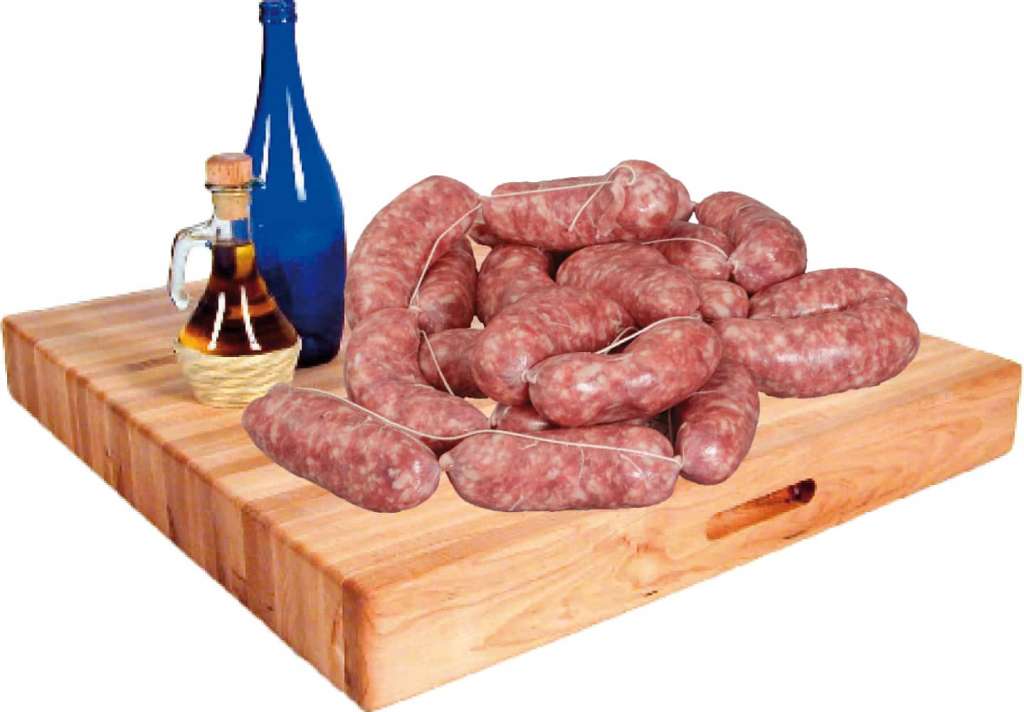
If you liked this article, put a like on my Facebook page
if you want to learn how to make fresh handmade tagliatelle, with the traditional Bolognese Meat Sauce subscribe to one of my classes.
Short class
one-day class
or the new Online Cooking Classes to live a cooking experience directly at your home
See you soon with a new article.
Chef Luigi
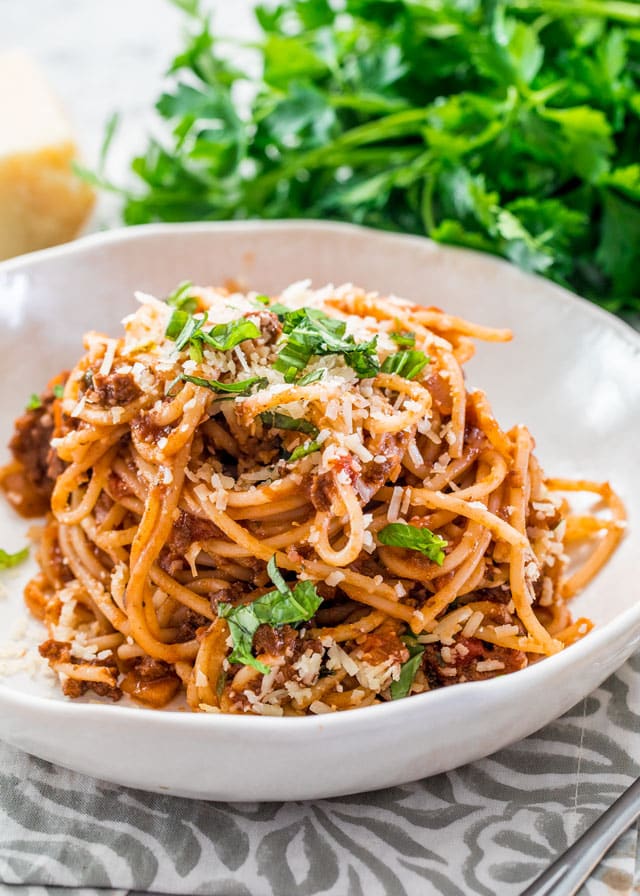
Spaghetti Bolognese is a true gastronomic case, which for years has stimulated a heated debate. Abroad this dish is appreciated and very popular, while in the city of the two towers (Bologna, where Bolognese sauce was born 350 years ago) it is generally considered a culinary blasphemy, in defense of the Tagliatella pasta to be combined with the traditional sauce.

A certain controversy has continued for some time, over the very existence of the dish and the characteristics of the recipe, which has always been offered in different variations.
How to cook the best Spaghetti Bolognese
In addition to denying its historical origins, many consider the combination of Bolognese sauce and durum wheat spaghetti (of Neapolitan origin) to be wrong and unpleasant, which, since it tends to be slippery, would not be able to hold the sauce well. Also for this reason, spaghetti Bolognese are generally neglected by the great Italian gastronomy.
The best Spaghetti Bolognese
But back to us, how do you cook the best Spaghetto Bolognese?
The secret is the sauce, and the sauce, made in Bologna is unrivaled, there are some fundamental points:
1) Have enough time to cook the sauce
To make an excellent Bolognese sauce you need to cook the sauce at least 2 hours, preferably 3 or 4 hours simmering.
2) Do not use tomato sauce, but tomato paste,
the tomato sauce, when you cook it for a long time, becomes acidic, with the tomato paste it remains sweet
3) The sauce should be red / dark brown and not tomato red
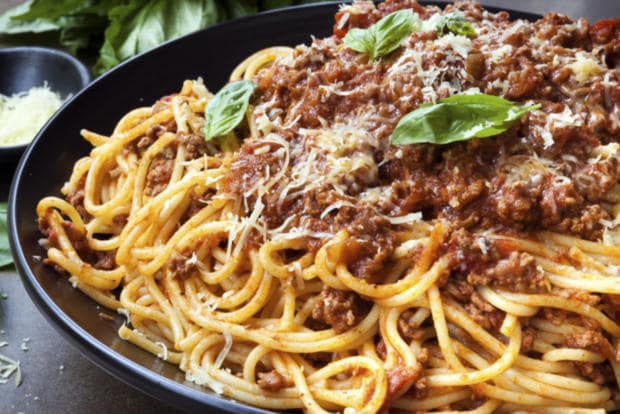
I have already written another article where I explained how to make the best Bolognese sauce and the mistakes to avoid.
But if you really want to learn how to do it, the real Bolognese sauce and how to cook in the right way, I suggest you to take an online class with me, with about 2 hours of class and an affordable price, you can learn how to make the best Spaghetti Bolognese ever.
below the link of the online class
I wait for you numerous
Master Chef Luigi